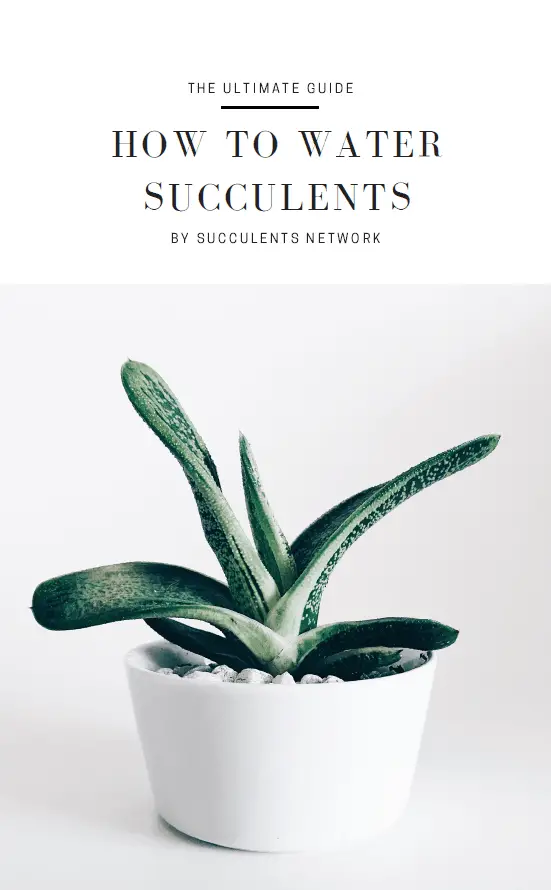Are cactus poisonous?
Many plant enthusiasts often ponder the question: Are the thorns of a cactus dangerous to humans? While the concern about ‘cactus poisonous’ thorns is quite common, it’s important to clarify that cactus thorns themselves are not poisonous. Unlike some plants that have evolved to use toxins as a defense mechanism against predators, cacti rely solely on their physical attributes – the spines – for protection.
These formidable spines serve as a deterrent to animals and humans alike, but if they break the skin, the risk is not one of poison. However, the thorns can carry bacteria and dirt, which, if not removed, may cause an infection. The skin’s natural barrier is disrupted when a thorn punctures it, creating an entry point for pathogens. Therefore, proper care and prompt removal of the thorn are crucial.
To be clear: it’s not quite that there’s no such thing as. There are toxic cactus out there, but they aren’t going to be the kind you buy as garden or houseplants; is only found in wild plants, and it’s very uncommon. (When you think about it, a plant covered in spikes isn’t going to need poison to keep predators away).
What should you do if a cactus spine punctures your skin? Firstly, resist the urge to pull it out hastily, as this may cause the thorn to break and remain embedded. The best approach is to sterilize a pair of tweezers with alcohol and gently extract the spine. Once removed, cleanse the area thoroughly with soap and water to eliminate any bacteria that might have been transferred. Applying an antiseptic is a wise next step to ensure that any potential pathogenic hitchhikers are eradicated.
It’s also beneficial to cover the area with a clean bandage to protect it while it heals. If you notice signs of infection such as redness, swelling, or a feeling of warmth, consult a healthcare professional promptly. Although cactus thorns are not ‘cactus poisonous,’ they can cause complications if not addressed with appropriate care.
Even if there is poison in the cactus, it won’t be in the thorns but the flesh. As long as you aren’t trying to eat one, you are never going to run into trouble with cactus poison. Still, cactus pokes can hurt, and you should treat an injury from a cactus thorn with a bit of care.
By understanding the nature of cacti and their defense mechanisms, you can enjoy these resilient plants without undue worry. Cactus thorns, while sharp, pose no toxic threat, but they remind us of the importance of cautious handling and care in our interactions with the natural world.
Through dispelling myths about ‘cactus poisonous’ thorns and providing practical advice for safe cactus handling, we aim to educate and assure cactus owners and enthusiasts. The allure of these unique plants is undeniable, and with the right knowledge, their presence in your home or garden can be a source of joy rather than concern.
Are your succulents dying? Do you need urgent help to keep them alive? Don’t worry! This ebook will solve the problems. I shared all my secrets related to how to water succulents with you.
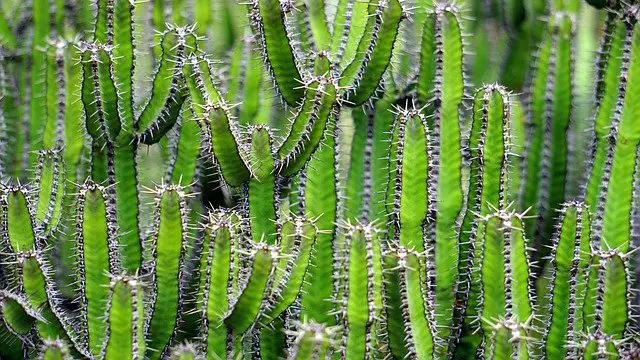
Picture via Pixabay
The Purpose and Anatomy of Cactus Thorns
In the world of succulents, cactus thorns are a subject of much curiosity. So, what exactly are these formidable features that define the cactus’? Cacti are unique plants, often having reduced leaves or none at all. Instead, they possess ‘areoles,’ which are specialized structures unique to cacti. Areoles are small, cushion-like areas of a cactus’s anatomy from which spines, flowers, and new branches emerge.
How Cacti Have Adapted to Harsh Environments
Cacti are predominantly found in arid, desert regions where water is scarce and the sun’s rays are intense. Over millions of years, cacti have adapted to these harsh environments by developing spines from their areoles instead of leaves. The spines provide various survival advantages: they offer shade, reduce water loss by limiting air flow over the cactus surface, and deter hungry animals with their intimidating presence. Moreover, photosynthesis occurs in the green, fleshy trunk or stems, which store water, allowing these plants to thrive in environments where other species may fail. There are also dozens of types of cacti sold for gardens and indoor cultivation.
The Variety and Beauty of Cacti for Home and Garden
Cacti come in an array of shapes and sizes, with dozens of species cultivated for both garden and indoor settings. Their appeal as houseplants lies in their sculptural beauty and their reputation as low-maintenance companions. Indeed, the resilience of cacti is notable; they are among the longest-living houseplants, with some species living for decades under the right conditions. To flourish, cacti require ample sunlight and minimal water, making them perfect for individuals seeking beautiful yet undemanding plants.
A cactus is also one of the sturdiest, longest-lived houseplants you can get. All a cactus needs to thrive is lots of sunlight and very little water. Look at the article “’How Long Do Cacti Live?” to find out about how many types of cacti there are and how to preserve your plants as long as possible.
Debunking the Myth: Are Cactus Thorns Poisonous?
A common myth surrounds cacti and their thorns—is there such a thing as a ‘cactus poisonous’ spine? It’s essential to address this: while cactus thorns can be sharp and potentially lead to physical injury if not handled carefully, they are not poisonous. Safety concerns arise from the potential for infection if thorns puncture the skin, not from any inherent toxicity in the thorns themselves.
Many varieties are pretty much prickle-free, and absolutely none of them are going to poison you.
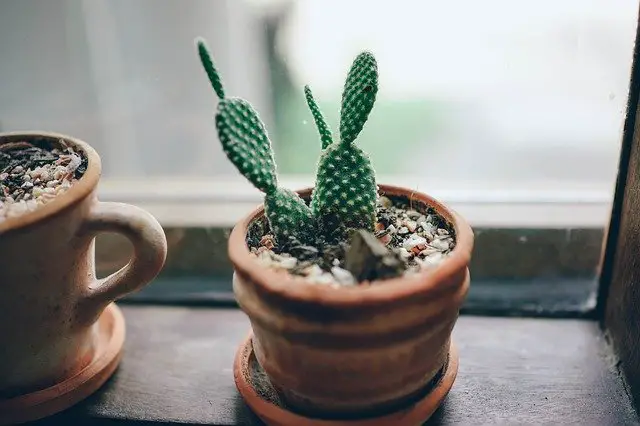
Picture via Pixabay
The Role of Thorns in Cactus Survival
When observing the imposing spikes of a cactus, one might wonder: why do these plants sport such sharp adornments? The answer lies in the remarkable adaptations of cacti to their often inhospitable environments. Cactus thorns, or spines, play a pivotal role in the survival of these plants. First and foremost, cactus spines serve as an effective defense mechanism. These thorns are a cactus’s answer to the threat of herbivores. In the vast and arid landscapes where water is a precious commodity, a cactus must protect its valuable stores from animals that might see the plant’s moist interior as a source of hydration. The sharp spines deter most animals from taking a bite, ensuring the cactus’s survival in the wild.
Learn more about how they’ve adapted to retain water and grow slowly in ‘How Fast Do Cacti Grow?’
Thorns: The Cactus’s Ingenious Water Conservation Strategy
In addition to protection, the thorns of a cactus play a crucial role in the plant’s water conservation strategy. In the desert, where every drop counts, the modification of leaves into spines significantly reduces the surface area from which water can evaporate. This evolutionary transformation allows cacti to maintain their internal water reserves, thriving in regions that receive scant rainfall. The rate at which cacti grow is intricately linked to their ability to conserve water. These plants have perfected the art of slow growth, utilizing their resources efficiently and effectively over time. The thorns are a testament to the cactus’s ability to adapt to its surroundings, making the most of what little it has.
Cactus Poison
Cacti are often recognized by their distinctive thorns, which can take on various forms, from needle-like sharpness to soft fuzziness. These thorns are not just a cactus’s defense arsenal but also a fascinating aspect of its identity. With such a wide variety, the shape and texture of a cactus’s thorns can often be the key to identifying its species. Thorns on a cactus are actually highly specialized leaves that have evolved over time to minimize water loss and maximize defense. This evolutionary marvel sets cacti apart from plants like roses and blackberries, whose thorns are modified stems or branches. Within the realm of cacti, there exist mainly two types of thorns: spines and glochids. The long, robust thorns, commonly referred to as “spines,” are synonymous with the classic image of a cactus. These spines serve as a formidable barrier against wildlife and are deeply anchored to the cactus’s structure, providing a first line of defense for these stoic desert dwellers. On the other end of the spectrum are “glochids” – tiny, hair-like thorns that are often overlooked due to their size but can be just as, if not more, treacherous than their longer counterparts. Glochids are known for their ability to detach easily and lodge into the skin, causing irritation. They are typically found on cacti like the Prickly Pear and Cholla, which, while less common as houseplants, still captivate with their unique defenses. These are what we frequently think of when we imagine a big spiky cactus out in the desert, or a little spiky cactus on your windowsill.
Despite the initial intimidation one might feel towards these prickly plants, it’s important to clarify that cactus thorns are not venomous. The notion of ‘cactus poison’ within the thorns is a myth; the real concern should be the potential for infection if these thorns penetrate the skin and are not properly removed and cleaned. A run-in with cactus thorns, particularly glochids, requires careful attention. If you find yourself the recipient of such a prick, the key is to remove the thorns as swiftly and safely as possible, followed by thorough cleaning of the area to prevent any possible infection.
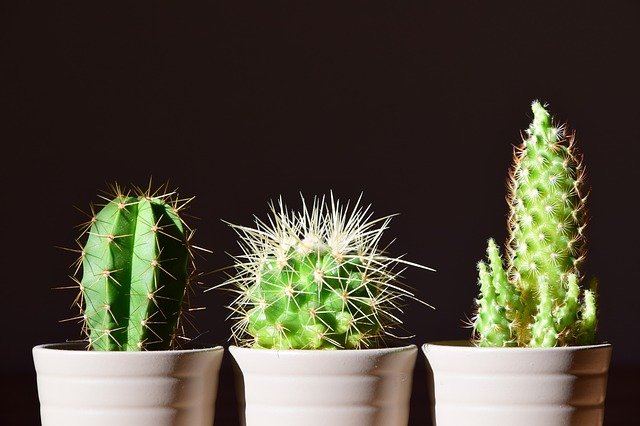
Picture via Pixabay
What to do if you’re pricked by a cactus:
Encountering a cactus spine can be an unexpected surprise, often leading to the question: “What should I do if pricked by a cactus?” While the common concern about ‘cactus poisonous’ thorns is a myth, proper care is crucial to prevent complications. If a cactus spine punctures your skin, the immediate step is to gently clean the area with soap and water, an essential practice to thwart infection. A bandage can be applied to safeguard the wound. In instances where the spine has broken off under the skin, a more delicate approach is needed. Avoid squeezing the skin, as this can exacerbate the situation. Instead, carefully employ sterilized tweezers to remove the spine, much like you would a wood splinter. If resistance is met, soaking the area in warm water can soften the skin and assist in the removal process. Afterward, administering an antibiotic ointment before rebandaging can promote healing and provide protection against bacteria and potential fungal irritants known to reside on cactus spines.
What about those pesky glochids, the fine, hair-like spines that detach from the likes of Prickly Pear and Cholla cacti? These can be particularly nettlesome, embedding themselves in the skin with ease and causing significant irritation if not removed promptly. Resist the urge to scratch, which can embed the barbs deeper into your dermis. Instead, use a piece of soft cloth, gently brushing over the affected area. If this doesn’t liberate the glochids, adhesive methods using tape, glue, or clear nail polish can be surprisingly effective. Apply your chosen adhesive over the glochids, allow it to set, then peel away, bringing the glochids with it. This method minimizes the risk of contact dermatitis, an itchy and uncomfortable reaction to the tiny barbs left behind in the skin.
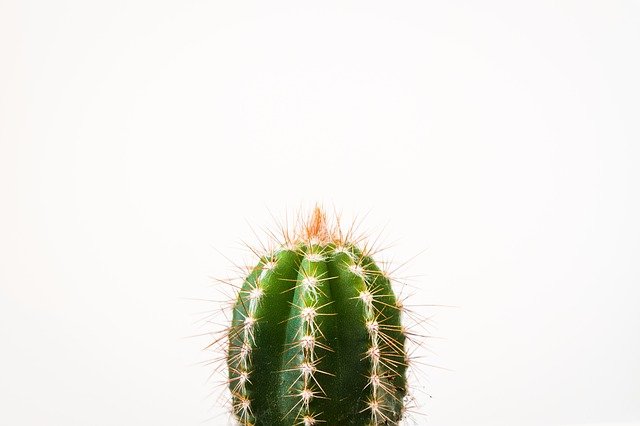
Picture via Pixabay
Are your succulents dying? Do you need urgent help to keep them alive? Don’t worry! This ebook will solve the problems. I shared all my secrets related to how to water succulents with you.
Understanding the difference between cacti and other succulents is essential, especially when out in nature or tending to your indoor garden. Though cacti are often believed to be dangerous due to their thorny exteriors, they are, in fact, a safe and enchanting plant choice, provided they are not ingested or mishandled. Their thorns, more intimidating in appearance than in touch, rarely break the skin. It’s essential to handle these desert denizens with care, appreciating their unique beauty without undue concern over ‘cactus poisonous’ myths. With the right knowledge on how to propagate cacti correctly and treat any thorn pricks, your experience with these hardy houseplants will be nothing but delightful. So whether you’re a seasoned cacti enthusiast or a curious newcomer, remember that these spiny specimens are friendly flora, as long as respect is paid to their natural defenses.
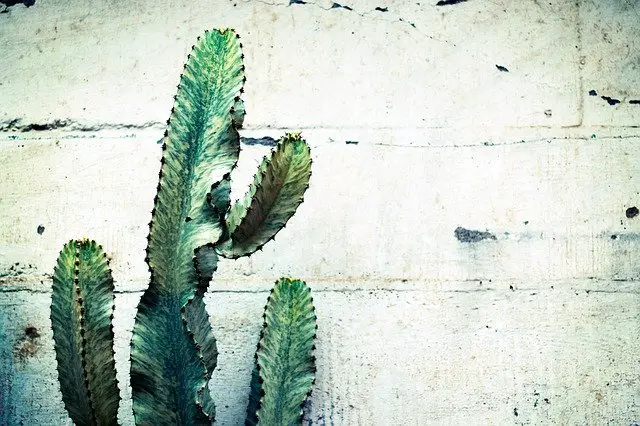
Picture via Pixabay
Moreover, the fascination with cacti extends beyond their practical care to their evolutionary story and environmental adaptation. These resilient plants have thrived in some of the most arid regions of the world due to their unique ability to store water and minimize evaporation. Understanding this can elevate your appreciation of cacti, transforming simple plant care into a deeper connection with nature’s ingenuity. Cacti’s robust nature makes them ideal for both beginners and experienced gardeners, offering a striking aesthetic with minimal maintenance. Whether adding to your collection or starting with your first succulent, learning about the various species, from the towering Saguaro to the diminutive Blossfeldia, reveals the incredible diversity and adaptability of these plants. Engaging with cacti is not just about managing their spines but embracing a piece of the earth’s biodiversity that challenges our perceptions of what it means to be resilient and beautiful.
Why Do Cacti Have Needles?
Many people often wonder, ‘Why do cacti have spines?’ Well, there is a simple answer to that question. Cacti have spines so it can easier survive the challenging environment that it usually grows in. An excellent example of that is cacti that grow in deserts. There these needles provide multiple functions such as to protect them from predators and provide shade to help regulate temperature. Spines also help reducing water loss that would otherwise accrue as well as assisting the plant to reproduce and spread out.

